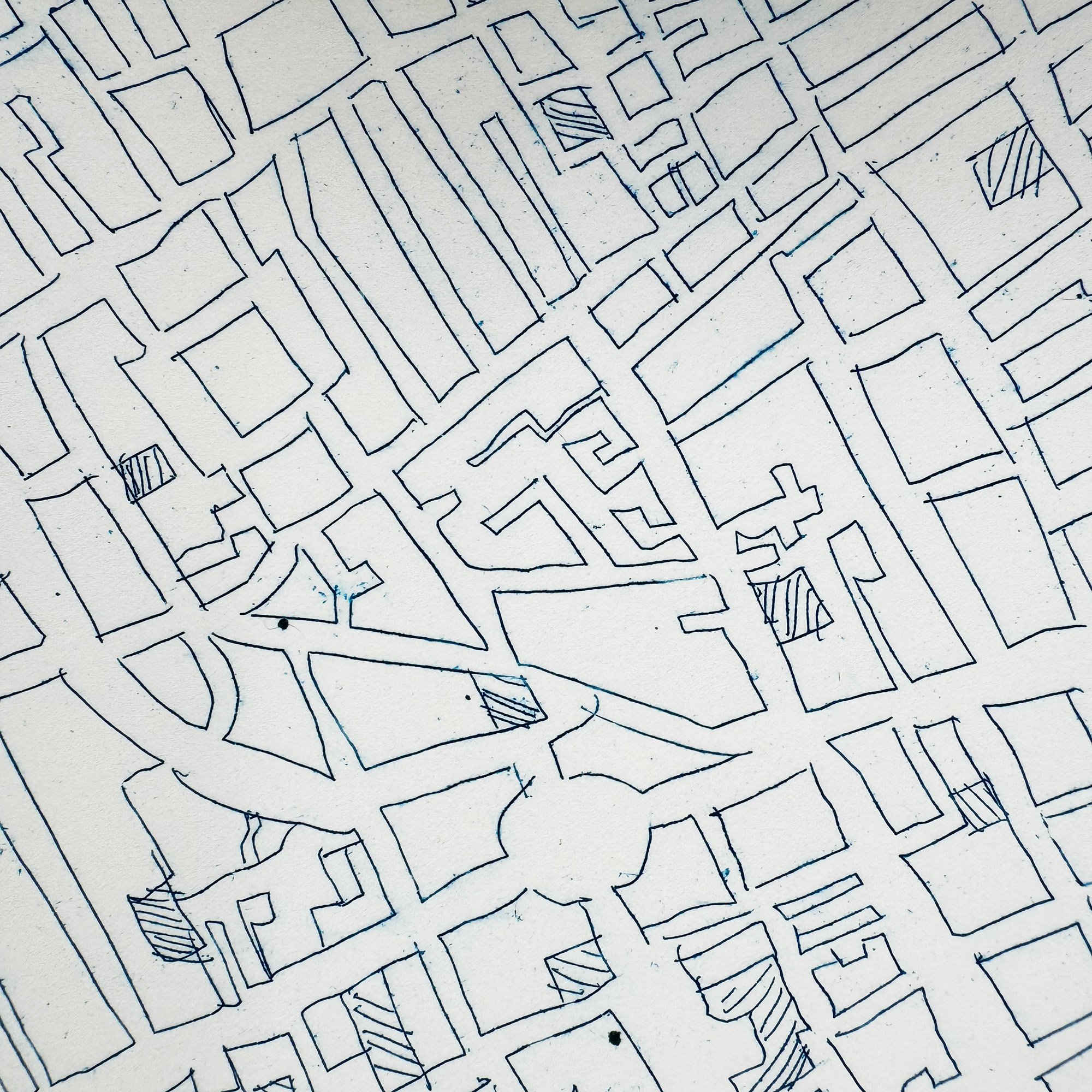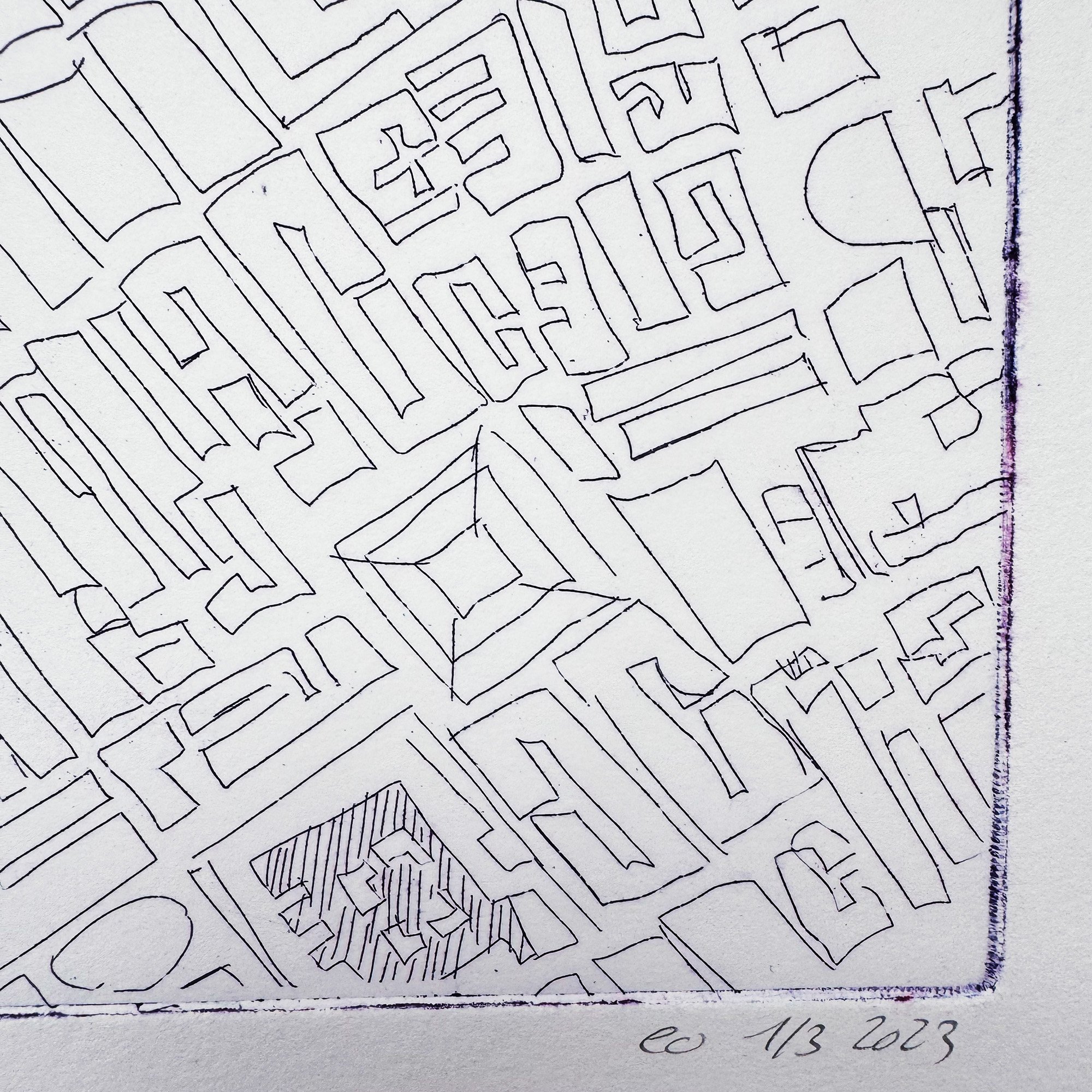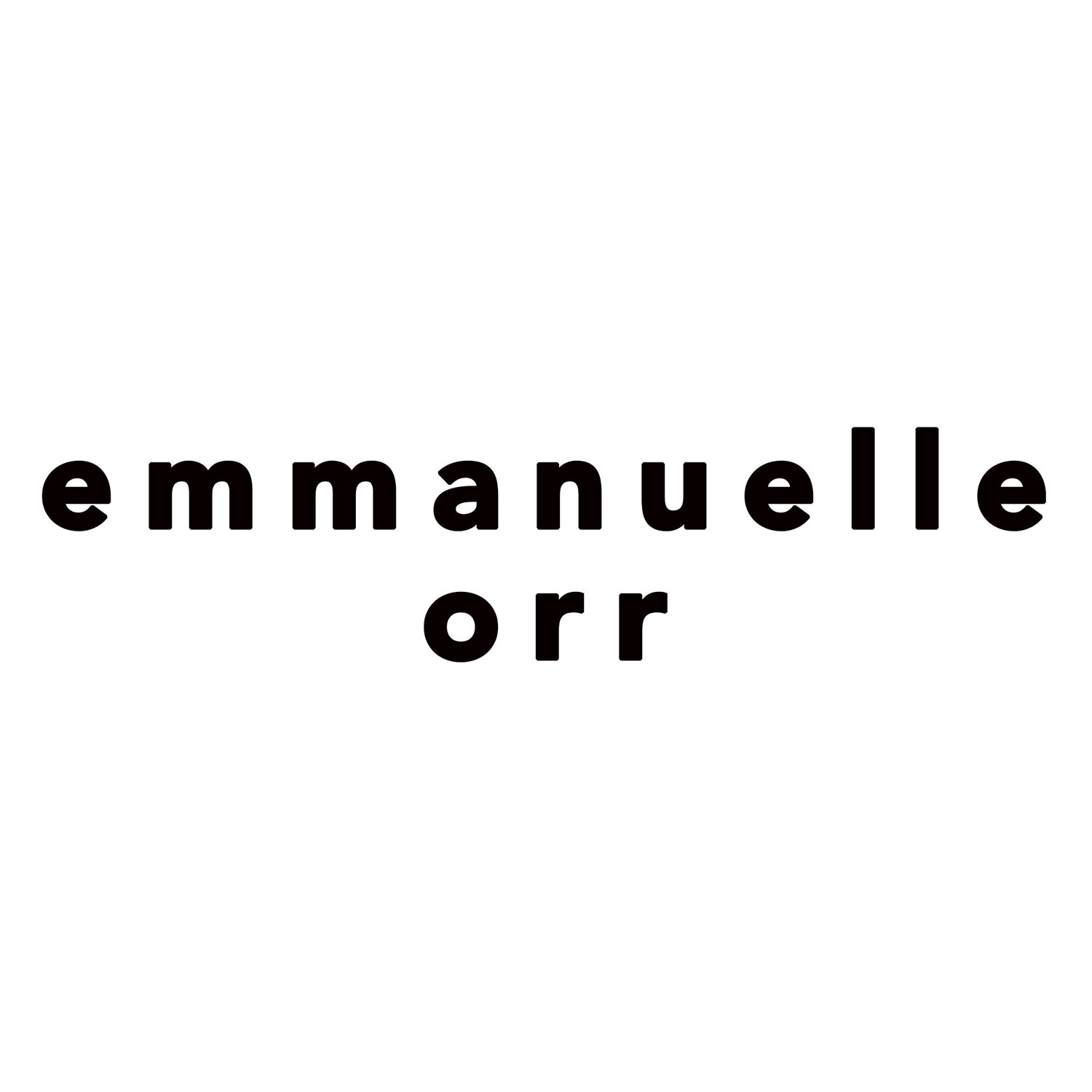Traces: 1873- Wordless maps
For the last few years, I have been working on a project following the poets Paul Verlaine and Arthur Rimbaud through London as they knew it in 1872-73. I followed their traces through the city, seeing it with their eyes, hearing the words they heard, mapping out the areas they frequented. It has been a fascinating poetic journey and I even caught glimpses of a forbidden London within their texts..
During this quest, I accumulates a growing stash of materials, debris of my research: old images of London, maps, dictionaries, and of course the poems I pored over day after day as I interrogated the secret languages concealed within.
So when I embarked on a journey to discover etching last year, I summoned my poets to come with me, and decided to use this cache of material as a guiding light through my experimentation. I didn’t know where I was going, or what the result would look like, but I wanted to assemble these traces of 1873 London into a visual exploration.
This is the result.








Maps, like romances, are normally lined with words. Remove them, and the disorientation is vertiginous. The poems fade breathlessly into the silence. The city is a maze, a place that you no longer recognize or maybe never knew.
During my research, I stumbled into a lot of maps of London as it was in the late 19th century. The city changed a lot in this period, its topography altered by new streets, the fabric of urban life transformed by the arrival of trains and electricity.
The maps were barely recognisable to me, and I erased them more and more as I worked on etching them: I traced them onto drafting paper and then onto the etching plates, each copy slowly eroding the recognisable landmarks and leaving a labyrinthine pattern of lines and shapes. I removed all the names, leaving the viewer lost with nothing to orient themselves with.
The resulting prints bear witness of this process of decay and disappearance, a city both familiar and unknown.
